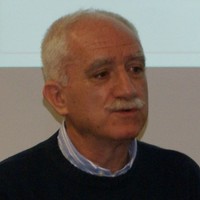Papers by Michael Tonndorf
Das Konzept der vernetzten Verwaltung, das digitale Netzwerktechnologien mit der kooperativen Nut... more Das Konzept der vernetzten Verwaltung, das digitale Netzwerktechnologien mit der kooperativen Nutzung gesellschaftlich verfügbaren Wissens und Engagements kombiniert, erfordert eine neue Sicht auf bestehende Verwaltungsprozesse und -strukturen. In diesem Buch zeigen mehr als 20 Autoren aus Wissenschaft, Wirtschaft und Verwaltung, dass Föderalismus und Vernetzung sich nicht ausschließen, sondern die "Zutaten" einer kundenfreundlichen, leistungsfähigen und wirtschaftlichen öffentlichen Verwaltung sind - ein praxisnaher Einstieg in die aktuelle Modernisierungsdebatte der vernetzten Verwaltung!
Softwaretechnik-Trends, 2000

Die effiziente Entwicklung und Pflege leistungsfähiger IT-Lösungen zur Unterstützung komplexer Ge... more Die effiziente Entwicklung und Pflege leistungsfähiger IT-Lösungen zur Unterstützung komplexer Geschäftsprozesse ist für die öffentliche Verwaltung ein entscheidender Erfolgsfaktor. Die Herausforderungen bestehen darin, eine moderne, effiziente und kundenfreundliche Verwaltung unter der Randbedingung des demografischen Wandels sowie knapper Haushaltsmittel weiterzuentwickeln. Das von Bundestag und Bundesrat im Juni 2013 verabschiedete E-Government-Gesetz ist am 1. August 2013 in Kraft getreten und verpflichtet die Verwaltungen, vor der Einführung von elektronischen Verfahren Signaturanforderungen zu verifizieren und ihre Geschäftsprozesse zu optimieren, bevor die IT-Unterstützung für die optimierten Verwaltungsverfahren realisiert werden kann. Um die erforderlichen IT-Projekte erfolgreich zu steuern, wurde das V-Modell XT und seine Vorgängerversionen entwickelt, seit den 90er-Jahren als Standard propagiert und regemäßig neuen Entwicklungen der Softwaretechnik angepasst. Parallel hie...
Proceedings of the conference on TRI-Ada '93 - TRI-Ada '93, 1993
The paper describes a tool environment which supports Ada compiler validations. The tool environm... more The paper describes a tool environment which supports Ada compiler validations. The tool environment implements a general validation method and is not dependent on the actual validation policy as issued by the AJPO. The main feature is an automatic comparison of a new result (candidate) with an already known and ttusted result (base). Thi's procedure can be optimised by reusing as much information as possible obtained by previous validations. In addition the environment is charcterised by a homogeneous user interfhce and a vali&tion database which stores validation results and related information.
Lecture Notes in Computer Science, 1993
This paper describes a method which minimises the manual effort that is required to analyse the r... more This paper describes a method which minimises the manual effort that is required to analyse the result of an Ada compiler validation. The method is not dependent on the actual validation policy as issued by the AJPO, but applies to general principles of compiler validation. The essential idea behind any attempt to reduce validation effort is automatic comparison of a new result (candidate) with an already known result (base). This procedure can be optimised by reusing as much informations as possible obtained by previous validations.
Softwaretechnik-trends - STT, 2000
Softwaretechnik-Trends, 2002
Unterkunft: Wir empfehlen die folgenden Hotels, von denen aus der Veranstaltungsort bequem zu Fuß... more Unterkunft: Wir empfehlen die folgenden Hotels, von denen aus der Veranstaltungsort bequem zu Fuß erreicht werden kann. Bitte buchen Sie frühzeitig unter Angabe des Stichworts "Ada-Tagung". Programm Nachmeldungen sind bei Barzahlung auf der Tagung in Jena möglich.
Ada Deutschland Tagung, 2003

Reliable Software Technologies — Ada-Europe '96, 1996
Germany is partner in an international development program of a flying weapon system. The softwar... more Germany is partner in an international development program of a flying weapon system. The software of this system is implemented mainly in Ada. The project is faced with the transition to Ada 95 as the product is intended to be in use beyond the year 2020. Four different alternatives are presented which reflect possible scenarios for a project specific transition to Ada 95. These have finally to be graded by the contractors and preference for one of the alternatives has to be established. 9 Learn Ada 95; gain experiences with free educational material (e.g. New York University's GNAT), 9 acquire project specific Ada 95 compiler and tools as soon they are available, 9 review the project requirements in order to identify the demand for Ada 95 functionality, 9 start selected re-implementations under Ada 95: compilation tests, linker-/builder tests, performance tests; 9 select revised coding and testing standards for Ada 95 (see e.g. [6]), 9 select an Ada 95 software development environment, 9 decide on the transition strategy to Ada 95. 3.5 The Scenarios In the following four scenarios are presented which reflect possible decisions to handle the Ada validity problem during the projects lifecycle. Based on these scenarios, potential problems of transition and maintenance during the lifecycle are pointed out and the resulting advantages/disadvantages are discussed: 9 continuation with the current Ada 83 infrastructure (no Ada 95), 9 minimal Ada 95 solution in Ada 95, 9 partial redesign in Ada 95, 9 complete redesign in Ada 95. All senarions are described in a uniform schema: the goal, associated activities, the expected benefits, drawbacks and risks and a total assessment. 3.5.1 Scenario One: Ignore Ada 95, continue with Ada 83 for project lifetime Goal: * Minimize effort in the development phase, 9 avoid any effort to select a strategy for Ada 95. Activities: 9 Freeze hardware and software of the Software Development Environment (SDE), 9 freeze target hardware, 9 make long-term-contract with actual compiler vendor to reserve the right for maintenance support, 9 maintain Ada 83 compiler releases for the project lifetime, 9 develop a logistics concept for software development environment hardware and software. 506 Benefits: 9 No language confusions, 9 short term: no delays in acquisition, availability of SDE is guaranteed, 9 the cheapest solution on a short-term base (development). Drawbacks/Risk: 9 Functional upgrade potential reduced, 9 reduced access potential to emerging standardized components libraries specialized application areas (e.g. avionics), 9 dependency on compiler vendor for project lifetime, 9 drifting away from trends in SW-technology.
Lecture Notes in Computer Science, 1998











Uploads
Papers by Michael Tonndorf